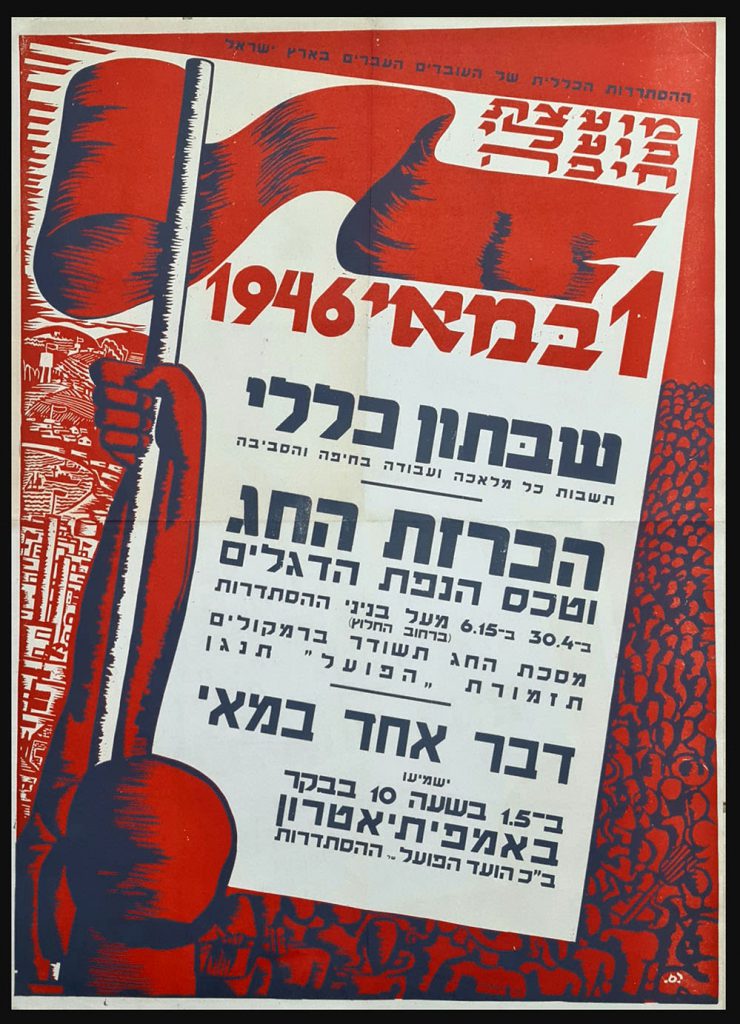
30 Apr The Rise and Fall of Israel’s May Day- Histadut And May Day Posters
May Day is no longer widely observed in Israel, though it used to be one of Israel’s most popular holidays.
Its rise mirrored the key role of labor movement played in the development of the State of Israel, and the holiday’s subsequent diminishment reflects the movement’s decline over the years. May Day, of course, wasn’t born in Israel but in the United States in 1882 with demands to limit the workday to eight hours by May 1, 1886. When this deadline wasn’t met, strikes and protests broke out in major cities, and annual May Day events have been taking place worldwide since 1890.
Many Eastern European Jews who participated in the Workers’ Movement immigrated to Palestine at the beginning of the 20th century and brought May Day with them. The first May Day protest in Palestine occurred in 1904 in Petah Tikva, led by a few newly arrived laborers, which caused shock among the townsfolk. At a synagogue meeting that evening, there was a fierce argument about handing over the demonstrators to Ottoman authorities. Ultimately, they decided not to. The next year, Poalei Zion, the first socialist party in Palestine was founded and organized small protests on May Day in some of the Jewish settlements.
Those were the early days of the Second Aliyah, from 1904 to WWI, many young socialist Jewish immigrants arrived in Palestine, causing significant demographic changes. As a result, May Day strikes and demonstrations increased annually. May Day events during that period consisted of small meetings with speeches, music, and short dramatic performances. They typically concluded with the singing of Chaim Nachman Bialik’s “Tekhezaqnah,” adopted as the Socialist Zionists’ anthem, and “The International” in Russian or Yiddish, the anthem of the international worker’s movement.
Then the Great War broke out
The Ottomans cracked down on the Jewish settlers, especially the socialists among them, and May Day celebrations were effectively doused until the war was over and the British took control of the country. It was under British rule that May Day came into its own, as another wave of Jewish immigration from Eastern Europe began to flow into Palestine.
In 1921 the Histadrut organized a May Day assembly in Tel Aviv. It started out as the biggest such demonstration the country had ever seen but quickly turned into a disaster when a parade was dispersed by British authorities and turned into an angry mob that attacked the Jews of Tel Aviv, killing 37 and injuring 200. Among those killed was writer Yosef Haim Brenner, who became a martyr of the Jewish Socialist movement in Palestine.
But this didn’t stop the holiday, By 1924 May Day had turned into one of the most important holidays of the year. The festivities would begin the evening before, with parties and balls around the country. The next day, nearly all factories, building sites, ports, and large businesses were closed for business, and the streets were filled with laborers on their day off wearing red ribbons on their lapels. Year after year, May Day grew and grew, with more business shutting down their operations, some such as Haaretz begrudgingly, and more people attending the growing number of events which as of 1926, with the founding of the Socialist sports association Hapoel, began to include sporting events as well.
By the mid-1930s nearly all business in the country would close on May 1, and assemblies were held throughout the country. In addition to assemblies large and small, some years the British authorities permitted large parades to be held in the major cities – Tel Aviv, Jerusalem, and Haifa. By the final years of the British Mandate in Palestine, May Day was truly an all-encompassing event, with 50,000 people participating in the main event in Tel Aviv, and many thousands more taking part in events around the country.
Things began to change with the founding of the State of Israel in 1948 and the onset of the Cold War, May Day began to change.
David Ben-Gurion, Israel’s first prime minister, decided not to make May Day an official national holiday, and the socialist camp split, leading to separate assemblies, protests, and parades. The Histadrut attempted to revive May Day with various initiatives, but it continued to decline in popularity, with participation dominated mostly by members of youth organizations.
The decline of the left eventually led to the loss of its power in the 1977 election, and right-wing factions within the Histadrut appeared on the scene, calling on members not to participate and even holding small counter-protests. The Histadrut and the left attempted to fight the decline during the 1980s with large May Day parades, but it was said to have been the biggest in Israeli history in 1988, after which May Day celebrations dwindled away.
In 1989 as communism was collapsing in Eastern Europe, the Histadrut decided not to hold any May Day events that year, officially because May Day fell on the day before Holocaust Remembrance Day.
After that and throughout the 1990s, gradually all business began to open on May Day as usual, and parades, demonstrations, and assemblies became fewer and fewer, smaller and smaller until they had become just a trickle of Communists marching down Tel Aviv’s trendy Rothschild Boulevard, barely noticeable in the regular day-to-day traffic and that is much the situation today. There have been attempts to revive May Day: some protests and parades were organized in Haifa and Tel Aviv in 2009 and 2010, the latter drawing 5,000 protesters. But they are far from the sweeping affairs of yore and what May Day even represents no longer seems to be common knowledge.
May Day and Arab-Jewish Relations
May Day historically reflected the complex relationship between Jews and Arabs, with both groups often marching together in solidarity in Haifa and Nazareth. However, at times this unity broke down and May Day became a platform for conflict. In 1965, Arab youths in Nazareth trampled Israeli flags and allegedly assaulted Jewish girls, resulting in arrests by Israeli authorities. In 1976, May Day protests in Arab towns focused on nationalist rhetoric and clashed with Israeli security forces. The 1990 May Day saw rioting in East Jerusalem during the Intifada. While the conflict has occurred in the past, today May Day demonstrations usually symbolize Jewish-Arab cooperation.
-
“Lend a Hand to Build the People’s House (“Beit HaAm”) VINTAGE ISRAELI POSTER – Israel, 1949
$1,800.00 Buy Now -
May Day Vintage Israeli Poster Workers Council General Sabbatical Israel Haifa 1946
$0.00 -
May Day Vintage Israeli Poster Workers Council General Sabbatical Tel Aviv Israel 1950, Yohanan Simon
$2,800.00 Buy Now -
Vintage Israeli May Day Poster May 1st “To establish Israel and promote the workers” 1953
$2,200.00 Buy Now -
Vintage Israeli poster celebrating the International Workers Day in May 1st
$0.00 -
We are your builders! Israel’s Histadrut movement political poster, 1949
$2,750.00 Buy Now


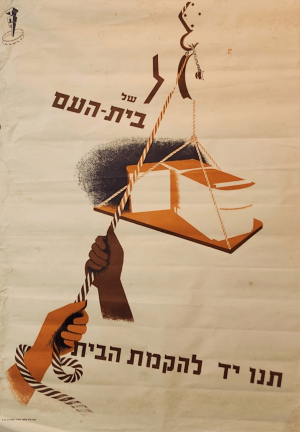
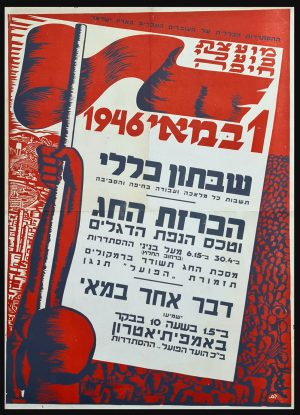

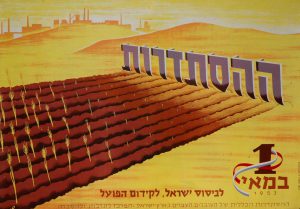

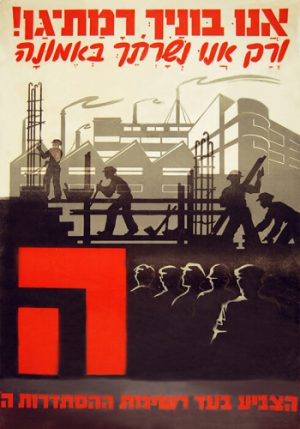
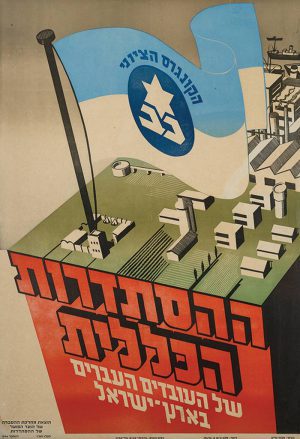
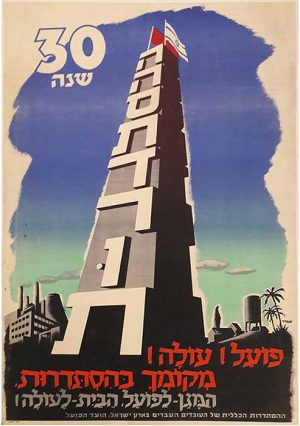

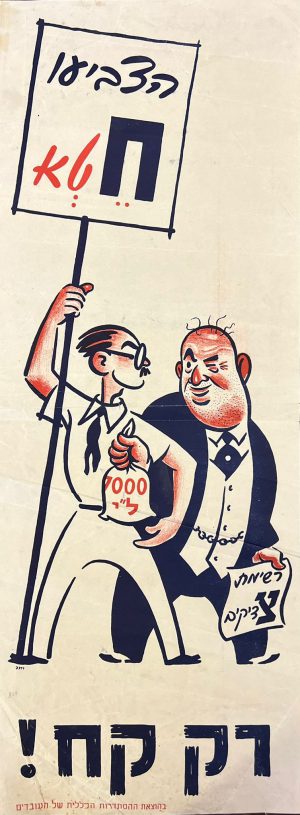

Sorry, the comment form is closed at this time.